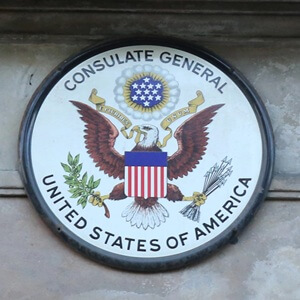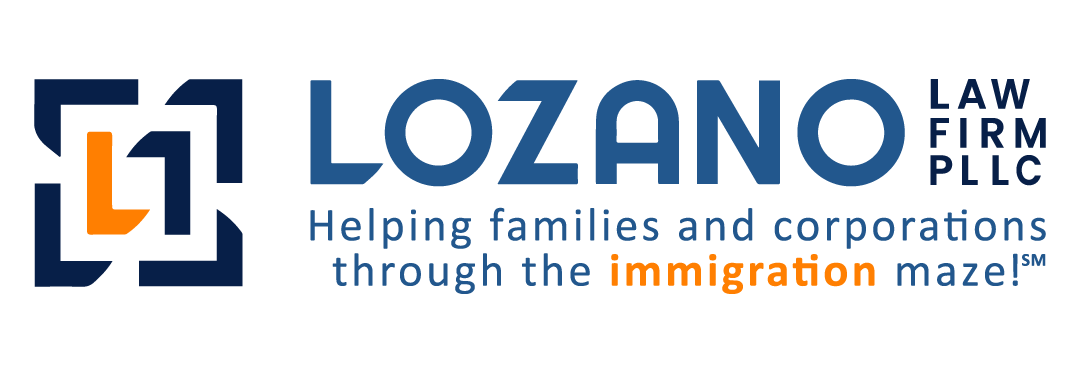Bringing loved ones to the U.S. is a meaningful step toward family reunification. Sponsoring them for U.S. Residency offers a clear path, but navigating the process requires understanding the steps, forms, and requirements. With the proper guidance, reuniting with your loved ones becomes more achievable.
If you’re considering sponsoring a family member, you might wonder where to begin or how the process works. See how to determine eligibility and gather the required documents. Discover the steps to guide your loved one through the sponsorship process and how legal representation can assist.

Bringing Your Family To The United States
Family-based immigration is a powerful way to strengthen relationships and connections. It enables U.S. citizens and lawful permanent residents (LPR) to sponsor qualifying relatives for residency. Taking the proper steps can make the dream of reuniting with your loved ones a reality.
Before sponsoring a relative, ensure you meet the eligibility requirements. For example, you must be at least 21 to petition for certain relatives, such as parents or siblings. You need to either be a U.S. citizen or a LPR. Additionally, you need to show that you can financially support your relatives.
United States Citizenship and Immigration Services (USCIS) divides these categories into immediate relatives and preference groups. Knowing which category your loved one fits into helps you navigate the steps ahead more effectively.
Understanding The Sponsorship Categories
Knowing which sponsorship category applies to your loved one is key to starting the process. Each has specific rules, timelines, and eligibility criteria determining how and when your relative can apply. By identifying the right path, you can take the first step toward reuniting with those who matter most.
Immediate Relative
Immediate relatives are given priority in the immigration system, allowing for a quicker path to residency. This category is reserved for close family members of U.S. citizens and comes with significant benefits, such as exemption from annual visa caps. Your loved one qualifies if they are:
- Spouses of U.S. citizens.
- Unmarried children under 21 of U.S. citizens.
- Parents of U.S. citizens if the sponsoring child is over 21.
This process offers a faster path to residency for eligible relatives, but it still requires careful preparation. Meeting all requirements and providing accurate documentation is critical to avoid delays. Taking the time to understand the steps ensures a smoother experience for you and your loved one.
Family Preference
Family preference categories allow U.S. citizens and lawful permanent residents to sponsor a wider range of relatives. Unlike immediate relatives, these have annual quotas, which can result in longer waiting times. However, they still provide a valuable opportunity for reuniting with loved ones. Here are the categories to consider:
- First Preference (F1): Unmarried adult children of U.S. citizens.
- Second Preference (F2A/F2B): Spouses, children, or unmarried adult children of lawful permanent residents.
- Third Preference (F3): Married children of U.S. citizens.
- Fourth Preference (F4): Siblings of U.S. citizens if the sponsor is at least 21.
While family preference categories may involve longer wait times, they remain a meaningful way to bring loved ones closer. Patience and careful preparation can make the process more manageable, ensuring your petition is on track. With time, dedication, and the proper steps, reuniting with your relatives is possible.
Breaking Down The Immigration Process
The immigration process for sponsoring a relative depends on whether your loved one is currently in the United States or living abroad. There are two main pathways: adjustment of status and consular processing. Each has specific steps, requirements, and timelines, and understanding these options clarifies what to do based on the applicant’s circumstances.
Adjustment Of Status
Adjustment of status is the process used by individuals already in the U.S. This option is commonly chosen by those who entered the country legally and meet the necessary eligibility criteria. It is a practical choice for those who wish to remain in the U.S. while completing the process. Here are the steps involved.
Determine Eligibility
Before beginning, make sure your relative meets the eligibility criteria for adjustment of status. They must have entered the U.S. legally and belong to an eligible immigration category, such as being an immediate relative or having a current visa number under a preference category. Ensuring eligibility is the foundation for a successful application.
File An Immigrant Petition
As the sponsor, you must file an immigrant petition to establish your relationship with your relative. This means submitting Form I-130, Petition for Alien Relative, for most family-based cases. If USCIS approves the petition, your relative can proceed with the status adjustment process.
Check Visa Availability
Before your relative can file for adjustment of status, a visa number must be available. Immediate relatives of U.S. citizens have visas available immediately, while preference category applicants may face waiting periods. Monitor the Department of State’s Visa Bulletin to ensure the visa is current for your relative’s category.
File Form I-485
Submit Form I-485, Application to Register Permanent Residence or Adjust Status, to USCIS. Include all required supporting documents and the appropriate filing fee. This form collects information about your identity, family history, and immigration background.
Attend Biometrics Appointment
USCIS will schedule a biometrics appointment for your relative at a local Application Support Center (ASC). During this step, your relative provides fingerprints, a photograph, and a signature. An immigration officer uses this information to verify their identity and conduct necessary background and security checks.
Participate In The Interview
USCIS may require an interview to assess your application. During the interview, an officer will ask questions to confirm your eligibility and verify the information provided. Be prepared to discuss your application details and provide additional documentation if requested.
By carefully following each step, you can help your loved one successfully navigate this process. Since even small mistakes can cause delays or denials, seeking guidance from an immigration attorney can make a significant difference. A knowledgeable lawyer can help your relative achieve their goal of becoming a permanent resident.
Consular Processing
Consular processing lets individuals abroad apply for residency at a U.S. embassy or consulate. While it shares similarities with the adjustment of status, there are key differences. Unlike the process for those already in the country, this option occurs abroad and concludes when the applicant becomes a permanent resident.
Approval Of The Petition
The process begins after USCIS approves the family-based petition, such as Form I-130. This confirms the relationship between the sponsor and the applicant. Then, the case moves to the National Visa Center (NVC) for further processing.
National Visa Center Processing
The NVC manages the next phase, ensuring that all necessary forms, fees, and supporting documents are submitted. The applicant must complete Form DS-260, the Immigrant Visa Application, and provide civil documents like birth or marriage certificates.
Accuracy at this stage is critical, as incomplete or incorrect submissions can lead to delays.
Consular Interview
After the NVC processes the application, the U.S. embassy or consulate schedules the applicant for an interview. During this stage, a consular officer verifies the applicant’s documentation and reviews their eligibility. The officer also questions the applicant’s relationship with the sponsor, as well as their background and intentions.
Arrival At The Port Of Entry
If approved, the applicant travels to the U.S. with their immigrant visa. At the port of entry, they present their Visa Packet to a U.S. Customs and Border Protection (CBP) officer. The CBP officer reviews the documents, conducts an inspection, and decides whether to grant admission as a lawful permanent resident.
Finalizing Permanent Resident Status
If the CBP officer grants admission, the individual becomes a lawful permanent resident. USCIS then mails the green card to the registered address in the U.S. This streamlined consular processing is a practical pathway for those residing abroad.
Reaching the point of legal permanent residency requires completing several steps, whether through consular processing or adjustment of status. Each stage demands accurate documentation, timely submissions, and adherence to legal requirements. An immigration attorney can guide you through the process, helping you handle everything efficiently.
Partnering With Lozano Law Firm To Sponsor Your Loved Ones

Sponsoring a loved one for U.S. residency is a meaningful step but comes with complex procedures and legal requirements. That’s where Lozano Law Firm steps in. Our team is here to help you every step of the way, offering clear, reliable support so you can focus on what matters most—your family.
We work closely with you to navigate the complexities of family-based immigration. Whether you’re filing a petition for a spouse, child, parent, or sibling, we ensure your applications are submitted correctly. From preparing Form I-130 to guiding you through interview requirements, we take pride in making the process as smooth and stress-free as possible.
Our approach is rooted in personalized attention. Every family is unique, and so is every immigration case. When you work with us, we take the time to understand your specific situation and provide strategies tailored to your needs. Together, we’ll work toward building a future where your family can thrive in the United States.
Summary
Sponsoring a relative for U.S. residency involves meeting eligibility requirements and understanding the available categories. Immediate relatives receive priority for green cards, while family preference categories provide opportunities for more extended family members.
For your family member to achieve LPR status, they must go through either adjustment of status or consular processing, depending on their location. For help navigating the steps and addressing challenges, Lozano Law Firm provides reliable legal support to bring families together in the United States.


 Thank you for contacting us. Please complete this form and one of our team members will be in touch with you soon.
Thank you for contacting us. Please complete this form and one of our team members will be in touch with you soon.

